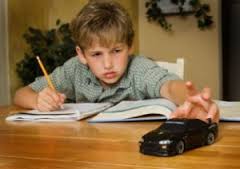ADD…. Not Always a Deficit!
So you have this great kid. He’s dynamic, smart, fun, curious, creative, and you love the way his mind works! Then, he goes to school and they’re not seeing the same things you are. You hear he’s not paying attention. Not applying himself. Not keeping up. Not behaving. Then you hear – maybe it’s ADD?
 You’re confused. Wondering, how does my smart, fun, creative kid have a deficit? A disorder?
You’re confused. Wondering, how does my smart, fun, creative kid have a deficit? A disorder?
I have good news. No, it’s more than that. It’s great news! ADD may not be what you think it is. In many cases, it’s not a deficit and it’s not a disorder. ADD, Attention Deficit Disorder, is used to describe kids who can’t sit still, pay attention, focus or follow directions. This is most noticed in the classroom. They make careless mistakes, are easily distracted, seem bored and cannot get or stay organized. The good news is – for the majority, none of this is about a deficit – or a disorder. It is about being a visual learner; a right-brain thinker with a fast paced, powerful mind that struggles to fit into logical, linear, language-oriented classrooms.
The same traits used to describe people with ADD describe visual-spatial learners, VSLs. They have a hard time paying attention in the classroom. They struggle to focus and remember. They make careless mistakes, are distracted, bored and have difficulty organizing. For most, it’s not because of a deficit or disorder. Visual-spatial learners have very different ways of thinking and remembering than our schools teach and when they’re in situations or classrooms that are not visual-spatial friendly – it looks like they’re the one with the problem. But it’s not them.
Approximately 11% of children 4 to 17 years of age have been diagnosed with ADD as of 2011, and it’s most commonly diagnosed in 7 year olds. That’s an alarming statistic, but we can turn the negatives of ADD into positives by understanding and applying the success strategies used with visual-spatial learners.
See the Positives
Visual-spatial thinkers are creative, imaginative and resourceful. They’re flexible, curious, enthusiastic and full of ideas. When the task before them interests them – which usually means it’s more visual, interactive and hands on – they can work hard and play hard to achieve great success. Here are some traits of visual-spatial learners that will help you understand better.
Manage their active mind
There’s a party going on in the right side of the brain and our visual kids have a hard time winding down, tuning out or turning it off. This is one of the biggest challenges visual thinkers have and explains a lot of their behaviors. They need help learning to quiet their mind so they can focus on the task at hand. Encourage them to spend time in quiet activities, limit computer and technology access and listen to recorded books or relaxing music to wind down.
Create order
Being organized is possible for visual kids, but it’s going to take some effort. Create a special place for backpacks and homework. Organize their rooms and clothes in ways they can follow up with. Establish routines for going to school, coming home, getting ready for bed, – for everything. Creating order around them will help create order internally.
Use visual learning strategies
Visual-spatial kids don’t learn the way other kids do. School requires kids to listen quietly, pay attention, follow directions and concentrate – all while sitting still. These are things visual-spatial kids struggle with because their brains need to see, move and get physically involved in the learning. But there are ways to teach visual thinkers that let them create their own ways of understanding. For more information on the differences take a look at How Schools Teach vs. How Visual-Spatial Kids Learn.
Whether visual learners or not, a few changes in the way we work with them can make a huge difference in their lives.
This blog was originally posted November 3, 2014.










